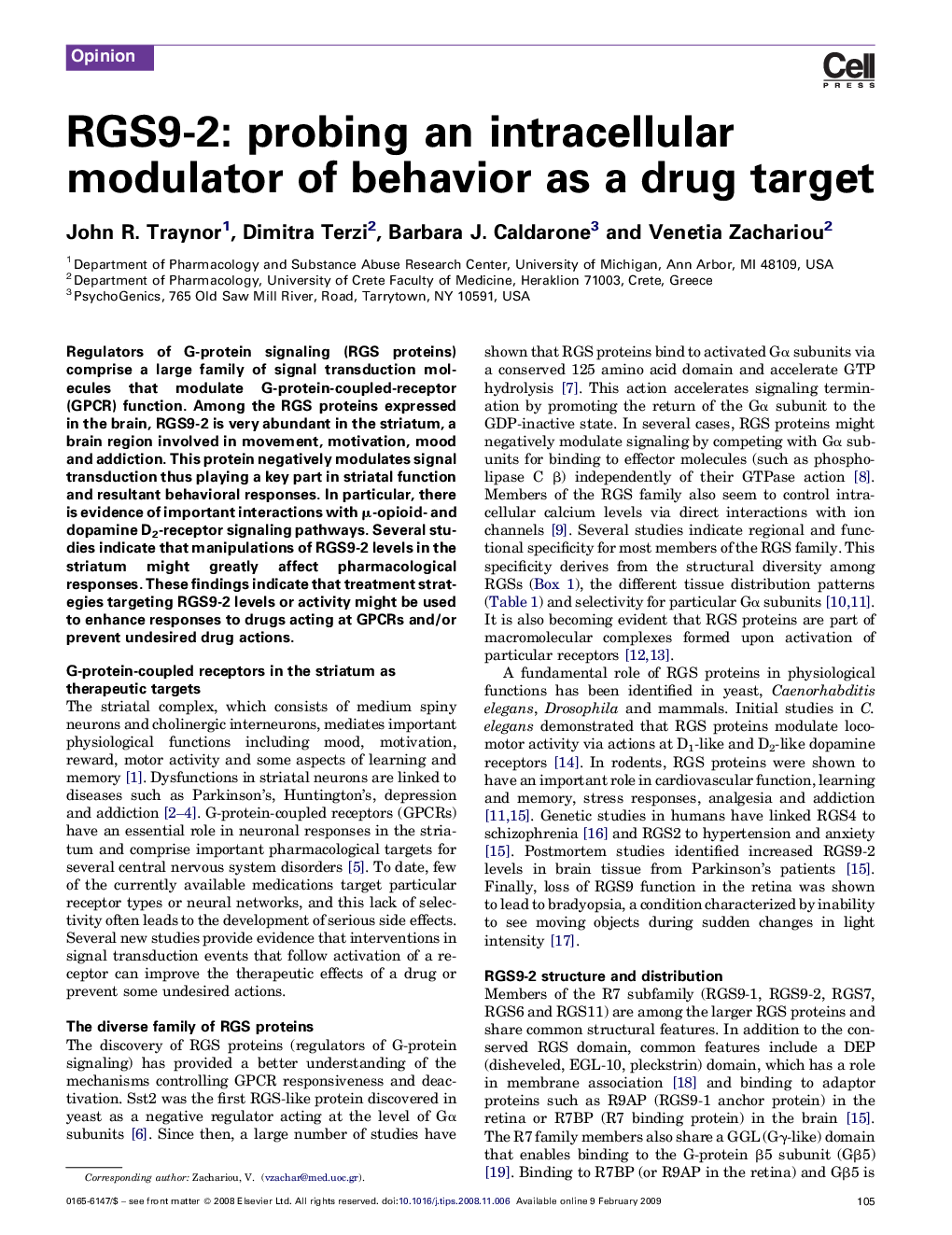| Article ID | Journal | Published Year | Pages | File Type |
|---|---|---|---|---|
| 2573323 | Trends in Pharmacological Sciences | 2009 | 7 Pages |
Regulators of G-protein signaling (RGS proteins) comprise a large family of signal transduction molecules that modulate G-protein-coupled-receptor (GPCR) function. Among the RGS proteins expressed in the brain, RGS9-2 is very abundant in the striatum, a brain region involved in movement, motivation, mood and addiction. This protein negatively modulates signal transduction thus playing a key part in striatal function and resultant behavioral responses. In particular, there is evidence of important interactions with μ-opioid- and dopamine D2-receptor signaling pathways. Several studies indicate that manipulations of RGS9-2 levels in the striatum might greatly affect pharmacological responses. These findings indicate that treatment strategies targeting RGS9-2 levels or activity might be used to enhance responses to drugs acting at GPCRs and/or prevent undesired drug actions.
